28 years after 'English Patient,' Juliette Binoche and Ralph Fiennes embark on 'The Return'
Published in Entertainment News
For Juliette Binoche, reuniting with Ralph Fiennes, her co-star in both “The English Patient” and “Wuthering Heights” three decades ago, was a joyful homecoming.
“Because there’s trust, there’s the pleasure of being in another person’s presence, and sharing a craft as well as emotions,” she says of joining Fiennes for “The Return,” director Uberto Pasolini’s new adaptation of “The Odyssey,” Homer’s ancient Greek epic poem.
“We stayed friends,” Binoche says. “I came to see his play; he came to see me. We’ve known each other more than 30 years, 35 years, I think.”
In “The Return,” Binoche plays Penelope, who has waited 20 years for the return of her husband Odysseus, played by Fiennes, from the many years of the Trojan War and the misadventures that befell him after it.
“We had the background of those characters in a way,” Binoche says of their long connection. “Even though we’re not wife and husband, we’ve been friends. There’s the weight of this time, and that and the joy of being in an ancient story, making it vibrant and modern and truthful, it gives you so much.
“You understand the privilege of what you’re doing, especially when you do it with the people you love.”
For Pasolini, who has produced more films than he has directed, working with such talents as Binoche and Fiennes stirred different feelings.
“To start with, you have to be a mixture of arrogance and foolishness, first of all, to think that there is any point in you trying to have a dialogue with Homer,” he says. “But once you accept that, you need to be arrogant enough to say, ‘Am I going to be able to talk to people of this depth and experience and talent and quality?’
“And you have to put away those thoughts and just, you know, (think) what are we doing today?” Pasolini says of directing Binoche, who won an Oscar for best support actress for “The English Patient,” and Fiennes, who was nominated for best actor for the same film. “What is the point? And share your feelings with them — and then very, very importantly, let them take over.
“It’s very important if you have talent of that nature, to use that talent, to let them be,” he says. “Otherwise, might as well not. Trust them. The truth is that their instincts are usually much better than yours, even if you have written the text.
“The instincts as humans impersonating the person you have written on the page are more profound and more imaginative and deeper than what you have put on paper.”
An intimate ‘Odyssey’
Pasolini jokes that his journey to making “The Return” took a decade longer than the 20 years covered in “The Odyssey.”
“I have been working in movies over 40 years now,” says Pasolini, whose breakthrough came in 1997 when he produced the British comedy “The Full Monty.” “When I tried to be an independent producer, one of the first things I thought of working on was ‘The Odyssey,’ which had been a passion of mine in very different ways from childhood onwards.”
When his parents read him the story as a boy in Italy, Pasolini loved the magic and myths of such moments as Odysseus’s encounters with the Cyclops or the Sirens, he says. As a teenager, he identified with the travel and adventure, both of Odysseus during the war and after it, as well as the yearning of Odysseus and Penelope’s son Telemachus, played by Charlie Plummer in the film.
“Then you grow up a bit more and you become a father and a husband and those are the things that keep you going back to Homer,” he says. “Not the monsters, not the gods, not the travels, but the humanity of these individuals.”
Thirty years ago, Pasolini started working on the screenplay with John Collee, writer of such films as Peter Weir’s “Master and Commander,” the animated movie “Happy Feet,” and this year’s Kate Winslet biopic “Lee.” More recently, the acclaimed English playwright Edward Bond also worked on it.
Their screenplay focused on the final books of “The Odyssey,” starting at the point Odysseus washes ashore on his home island of Ithaca. When Fiennes, whom Pasolini had known for years, agreed to do the film, the director returned to the screenplay again.
“I went back to the text again and the main thing was literally cleaning it of anything that seemed to be not pertinent to the story of this family coming together,” he says. “These individuals — not characters — individuals, real people.
“We didn’t have to invent much at all,” Pasolini says. “It’s all there. … One doesn’t really focus on how – not modern, because it’s the wrong word – universal and timeless Homer is in his understanding of the human condition.”
Penelope and Odysseus
When Fiennes told Binoche about the project and suggested she consider the role of Penelope, she watched Pasolini’s past films, read the screenplay, and said she would do it.
“It was a huge role to play Penelope as a big archetype of this myth,” she says. “We talked about trying to make her very human and real, and shared the process, discussing and asking questions to make alive it and truthful.”
In the film, as in Homer’s poems, Penelope and Odysseus do not reunite the moment he reaches Ithaca’s shore. He is broken by all that he’s seen and done, unsure whether his wife and his people will accept his return. She does not recognize him as more than a beggar the first time she sees him after 20 years gone.
“It’s interesting because Odysseus and Penelope, they’re both going through their journey, that both of them are very difficult, and how are they going to reach each other?” Binoche says. “That’s the question mark.
“He’s so traumatized by the wars he’s been through and he’s observing,” she says. “There’s this need to come back, and yet he doesn’t know how to. It’s an interesting metaphor. How do we go back to ourselves? How do you become again a human being? How do you love again?
“For her, it’s the abandonment issue she’s going through,” Binoche continues. “And the anger is rising, the frustration and the hope at the same time is coming when she hears the beggar is around. She immediately wants to go and see if he has some news of her husband. And when she realizes this beggar is actually the hidden husband, then there’s even more anger.”
When exactly Penelope recognizes Odysseus is ambiguous. Different texts of the poem tell it differently. In the film, it’s purposely left unclear at first, though Binoche knows what she thinks.
“It would be very strange for a wife and a husband, even after 20 years, even after all the wars and traveling, that you wouldn’t recognize the eyes or the voice or something in the demeanor of your loved one,” she says. “I think, as a woman, I would recognize him.
“In the text, you know. it’s not as clear whether she recognizes that,” Binoche says. “Maybe the author is making a mistake,” she laughs — take that, Homer! — and continues. “For me, it’s obvious.”
Healing waters
The story told in “The Return” is bookended by scenes of Odysseus in water, Pasolini notes, describing that decision as part of the metaphorical transformation he undergoes when he reaches the island over which he is king.
“We start with a man who is stripped naked,” he says. “A body on a beach, not a king, not a hero, not even a soldier at that moment. A body that needs to reconquer an individuality that he has lost because he doesn’t believe in that individual anymore. In fact, he hates the man he has become we find out later.
“He’s like a baby, you know — an old, old, tired worn-out baby,” Pasolini says. “And over the course of our story, he is forced to become himself again. Then, hopefully, by the end of it, we imagine that he will be able to accept who he has become. He hasn’t done it within the scope of our story, but we imagine with the help of Penelope, he will be able to do that in the future.”
The climax of the film comes when Odysseus, still disguised in his beggar’s blanket, does what none of Penelope’s unwanted and unworthy suitors could do, stringing the powerful bow he’d left behind, and then shooting an arrow through the holes in the heads of 12 axes. He dispatches with the suitors — more arrows are shot, swords swung, daggers daggered — leaving himself drenched in blood and Penelope stunned by what she has witnessed.
“The last scene is him in the water again,” Pasolini says. “Being washed. Metaphorically and physically washed again of the blood and of what the blood means: war, Troy, revenge, guilt, everything.”
It’s Penelope who bathes the shattered Odysseus, and as the film ends, he says he hopes they can forget the tragedy of their past. First remember, she tells him, then forget.
“The writing of the scene is beautiful, especially,” Binoche says. “It’s so moving because it shows how difficult it is to heal. Especially after terrible wars. You’ve got to be humble and slowly go into allowing to be fragile. Allowing to have flaws in order to transform, to change. You’ve got to go down the ladder of your ego, or your need to conquer, or to go to wars.”
It is not, both Pasolini and Binoche say, a story unfamiliar in today’s world where wars rage on several continents.
Pasolini says he read many interviews with Vietnam veterans and their wives and families to better understand the difficulties faced by soldiers returning from war. For Binoche, “The Return” shows a pathway for a world that seems to get angrier and angrier by the day.
“That’s our feminine side that is taking care of that,” she says of Penelope washing Odysseus’s body and soul clean in that final scene. “It’s the heart. It’s the ‘Wow, I’ve got to go back into a place that it feels I’m so vulnerable.’ And allowing it to be vulnerable and to be taken care of by another kind of feeling.
“We need that now. We need to heal.”
©2024 MediaNews Group, Inc. Visit ocregister.com. Distributed by Tribune Content Agency, LLC.




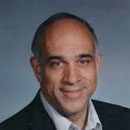

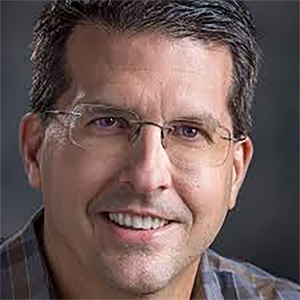

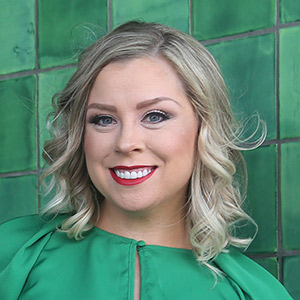



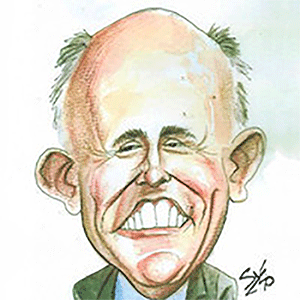
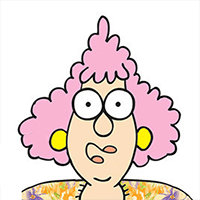


Comments